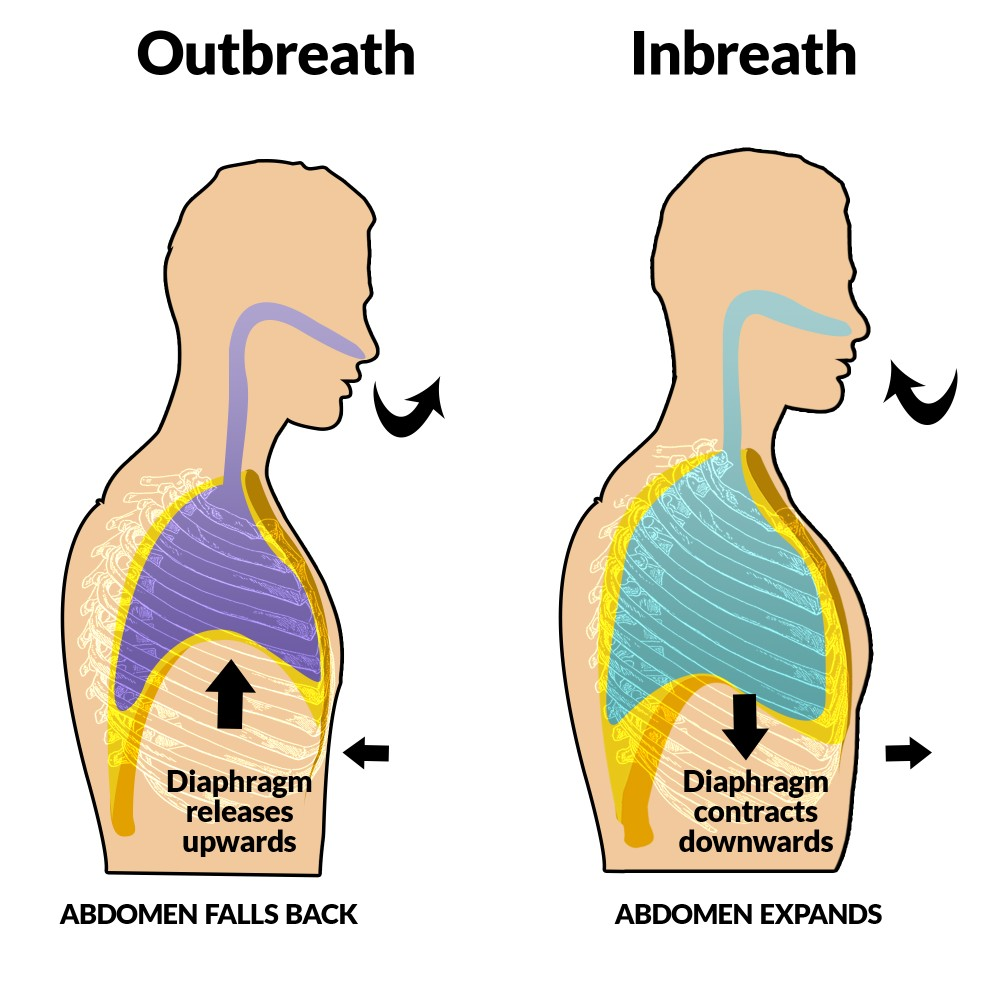
When you breathe ‘right’, you maximise the flow of oxygen around your body. This gives you more energy and helps prevent stitches. It also helps you keep calm as you train.
Keep these quick breathing tips in mind to get more from your workouts.
1. Actually do it
You do need to breathe! Not just in between, but during exercises. Holding your breath may be an instinctive reaction during a challenging movement, but this is counterproductive. It will make you tire faster and push up your heart rate.
If you find yourself constantly holding your breath, use your words. A bit of a roar, or counting out loud can force you to keep inhaling and exhaling. Just try to keep the swearing at a minimum!
Note: There is a method called the Valsalva Technique, which does recommend holding your breath.
2. Don’t overdo it
Now that you’re breathing don’t do it too much. Hyperventilating expels too much carbon dioxide from your body too quickly, causing you to become lightheaded.
Prevent this from happening by keeping your breathing on a happy medium as much as possible – no giant gulps for air and no rapid in/out breaths. Establish a rhythm and stick to it as much as possible.
3. Fill your diaphragm
‘Chest’ or ‘shoulder’ breathing is a no-no when working out because you are not filling your lungs with the good stuff (air). Taking shallow breaths uses the wrong muscles and can put unnecessary strain on your body.
Have a practice at breathing with your full diaphragm. You’ll notice you need to stand or sit up straight to do so, which is great because posture also makes a difference to your CrossFit workout.
Breathing correctly builds strength in your diaphragm, which in turn builds your cardio power.
How to breathe
Some exercise physiologists recommend breathing in through your nose and out through your mouth. Others say to always exhale as you lift a weight, inhaling as you place it back down.
Not every technique suits each individual, so have a chat to your trainer about what works best for you.
3 Exercises to Increase Your Lung Power.
Breathe Right
Here’s how Mindy Solkin, a New York City-based coach, teaches runners to engage their diaphragms.
Open Your Mouth
Your mouth is larger than your nostrils, so it’s more effective at taking in oxygen. Also, keeping your mouth open keeps your face more relaxed, which makes it easier to breathe deeply.
Breathe in Patterns
Coordinating your inhales and exhales with your footfalls develops diaphragmatic strength. Start with a 2-2 pattern-breathe in while stepping left, right; breathe out while stepping left, right. Advance to 3-3 (breathe in, step left, right, left; breathe out, step right, left, right), and then a 4-4 pattern.
Breath Enhancers
Cross-training exercises that reduce huffing and puffing
These three Pilates moves strengthen the diaphragm, stretch tight muscles, and improve posture-all of which help you run longer with less effort. Practice each exercise two or three times a week before you run.
1) The Hundred
Lie on your back, knees bent, feet flat on the floor. Keep your arms at your sides, palms down. Inhale and lift your head, neck, shoulders, and arms off the ground. Lift your knees and extend your feet so your legs are straight and at a 45-degree angle to the floor. Take five short breaths in and five short breaths out. While doing so, pump your arms, moving them in a controlled up and down manner. Do a cycle of 10 full breaths-each breath includes five inhales and five exhales. After you do 10 complete breaths, you will have completed 100 arm pumps.
The Payoff: Teaches controlled breathing, so that your inhales and exhales are balanced. Bonus: Builds strong abdominals.
2) The Swan
Lie face down with your palms flat under your shoulders (as if you were going to do a pushup). Look down so your neck is in line with your spine. Inhale and slowly lift your head, neck, shoulders, and chest as you press your hands into the ground. Keep a slight bend in your elbows. As you exhale, slowly lower yourself back down, chest first, then shoulders, neck, chin, and head. To avoid discomfort in your back, concentrate on pulling your shoulders back to open up your chest. Repeat 10 times.
The Payoff: Opens up the chest and deepens your lung capacity to correct shallow breathing.
3) Standing Chest Expansion
Stand up straight with your feet shoulder-width apart, your knees slightly bent, and your arms at your sides. Inhale and sweep your arms out and up so that your biceps are near your ears and your palms are facing each other. Exhale and lower your arms back down to your sides. Repeat four times, concentrating on breathing deep and opening your chest.
The Payoff: Stretches the intercostal muscles (which lie between the ribs), relaxes the shoulders, engages the diaphragm and pelvic floor, and helps balance breathing between the left and right lungs.




